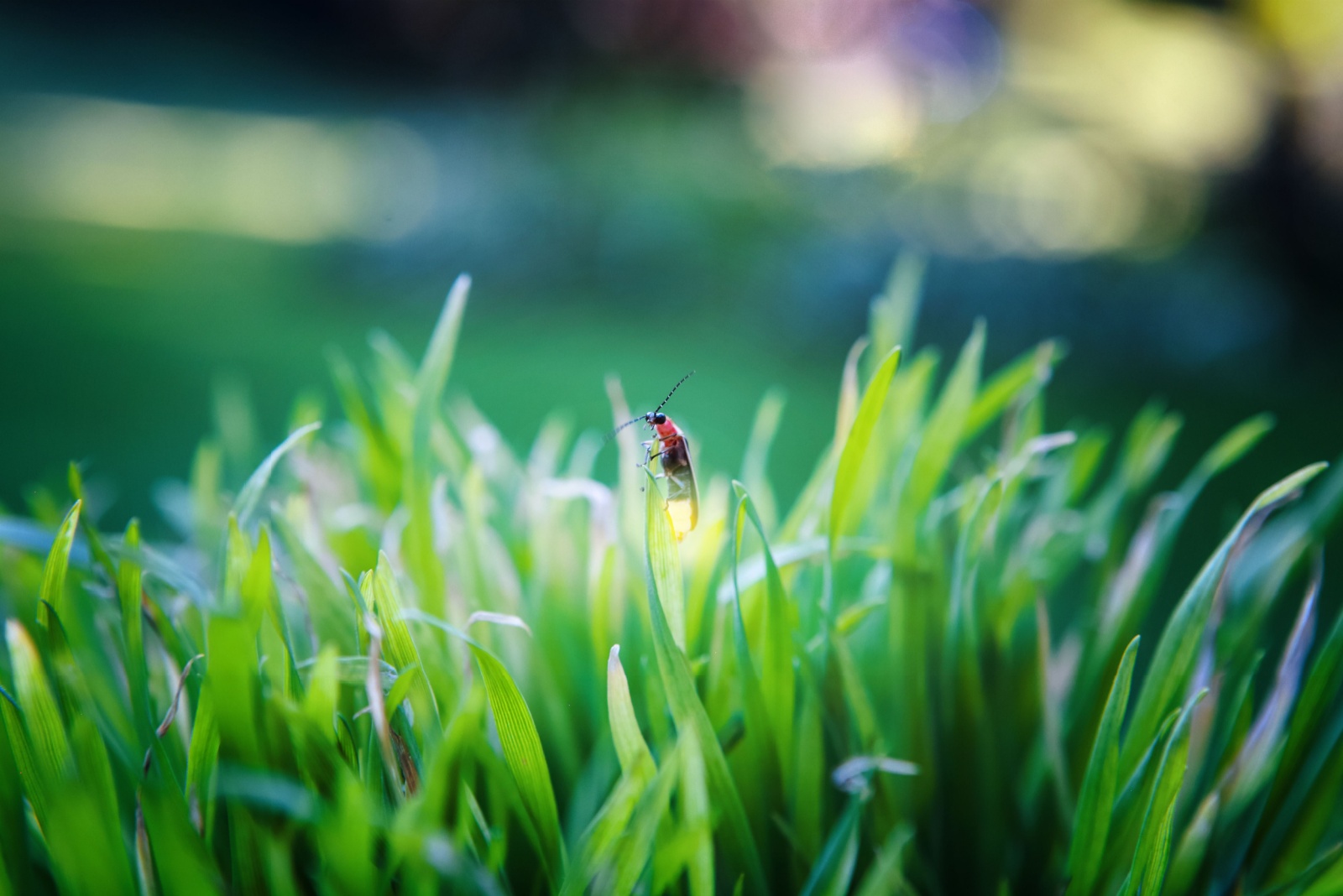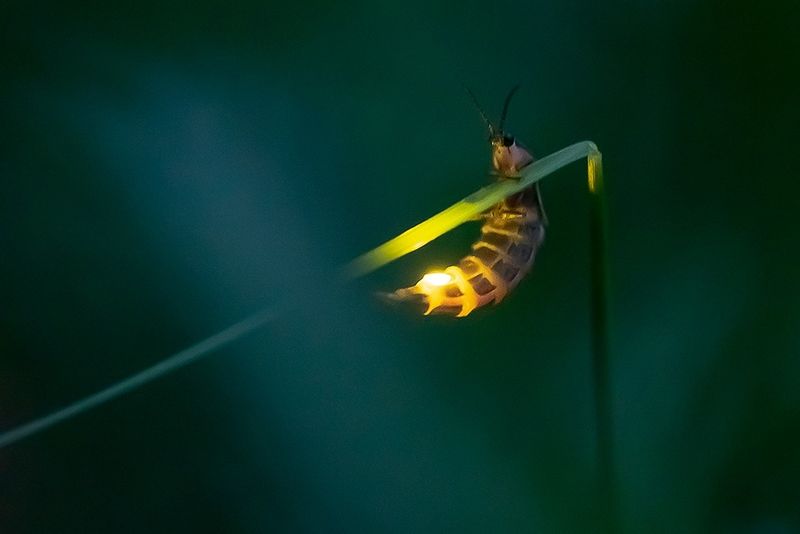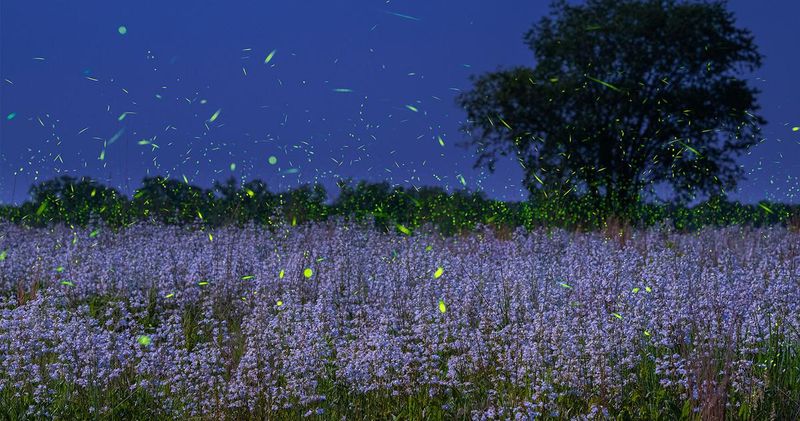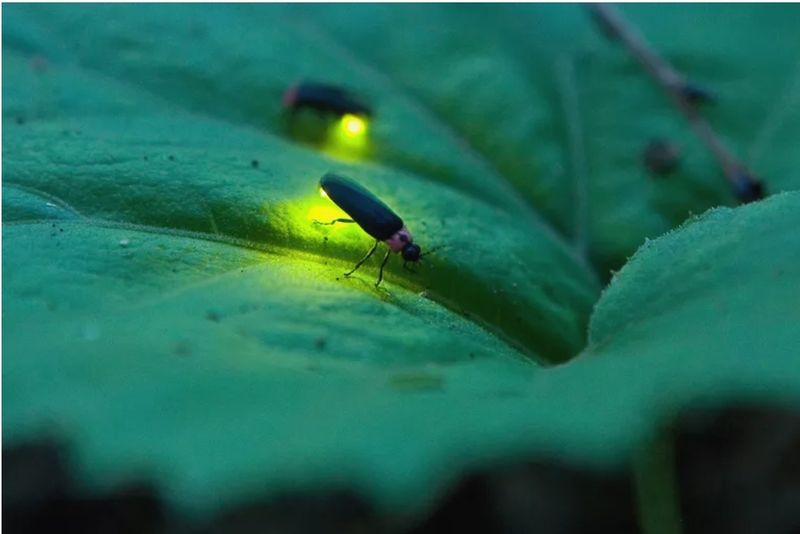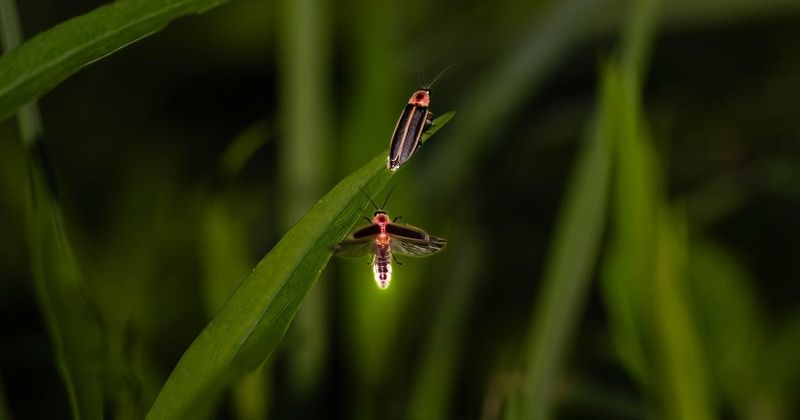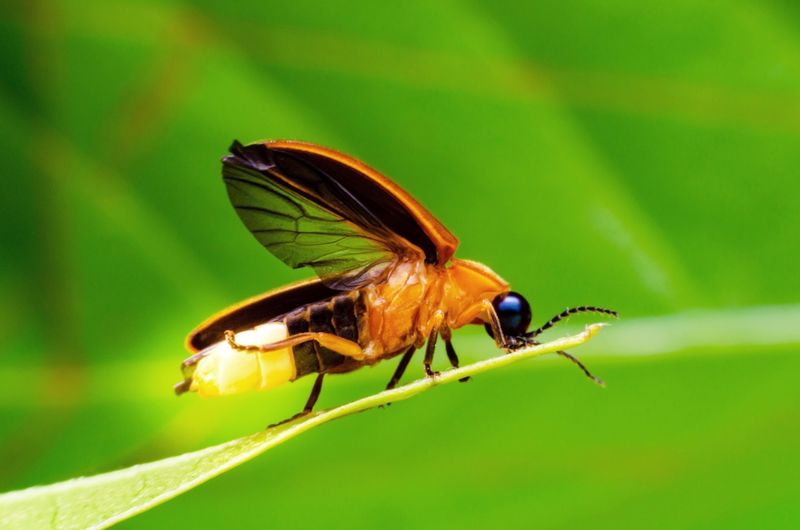Fireflies once lit up Nebraska nights like sparks from a magic lantern, yet their glow now slips through our fingers.
These tiny wonders flicker out across fields and backyards, hinting at troubles that hide in plain sight. Loss of habitat, harsh chemicals, and shifting weather patterns pull the rug out from under their fragile world. Each factor adds fuel to a slow decline that feels all too real.
1. Light Pollution Drowns Out Their Glow
Bright streetlights, porch lights, and glowing billboards make it nearly impossible for fireflies to find each other. Male fireflies flash specific patterns to attract females, but artificial lighting confuses these signals completely.
When cities and towns stay lit all night long, fireflies struggle to communicate and mate successfully. Without darkness, their romantic light shows become useless.
Turning off unnecessary outdoor lights during summer evenings can help fireflies thrive again in your neighborhood.
2. Pesticides Destroy More Than Just Pests
Chemical sprays meant to remove mosquitoes and crop pests also poison firefly larvae living in the soil and grass. Fireflies spend most of their lives as larvae underground, feeding on snails and slugs.
When pesticides soak into the ground, they eliminate the food sources fireflies need to survive. Even small amounts of chemicals can be harmful to these sensitive insects.
Choosing natural pest control methods protects fireflies and other beneficial bugs that help our gardens flourish.
3. Habitat Loss Destroys Their Homes
Parking lots, shopping centers, and new Nebraskan neighborhoods are replacing the wild spaces where fireflies once lived. Wetlands, prairies, and forests provide the moist environments fireflies absolutely need for survival.
When developers pave over these natural areas, fireflies lose their breeding grounds and feeding territories. Adult fireflies need tall grass and leaf litter to hide during the day.
Protecting green spaces and planting native gardens creates safe havens for struggling firefly populations throughout the state.
4. Climate Change Disrupts Their Life Cycle
Rising temperatures and unpredictable weather patterns throw off the delicate timing fireflies depend on for reproduction. Firefly larvae need moist soil to hunt their prey and develop properly.
Droughts dry out the ground, making it impossible for young fireflies to survive their two-year development period. Extreme heat waves also harm adult fireflies before they can reproduce.
Climate shifts happening across Nebraska make it harder for fireflies to complete their life cycle successfully each year.
5. Lawn Chemicals Create Toxic Environments
Weed removers and fertilizers commonly used on lawns poison the soil where firefly larvae live and grow. Many homeowners want perfect grass, but these chemicals eliminate the diverse ecosystem fireflies need.
Firefly larvae eat earthworms, snails, and other small creatures that also get harmed by lawn treatments. Without their food supply, baby fireflies starve.
Letting your lawn grow a bit wild and avoiding harsh chemicals creates a healthier environment for fireflies and their prey.
6. Loss Of Moisture-Rich Areas
Fireflies absolutely love damp places like creek banks, pond edges, and marshy areas where moisture stays in the soil. Nebraska has lost countless wetlands to agriculture and development over the past several decades.
Without these wet habitats, firefly larvae cannot survive because they need constant moisture to breathe and hunt. Dry conditions quickly destroy young fireflies before they mature.
Preserving streams, ponds, and wetlands gives fireflies the water-rich environments they desperately need for survival and reproduction.
7. Mowing Eliminates Breeding Grounds
Frequent mowing destroys the tall grass and leaf litter where fireflies hide, rest, and lay their eggs during summer months. Short, manicured lawns offer no protection for these delicate insects.
Firefly larvae live in the top layer of soil under leaves and plant debris. When people rake and remove all the natural ground cover, they eliminate firefly nurseries in Nebraska.
Leaving some areas of your yard unmowed and keeping fallen leaves creates perfect spots for fireflies to raise their young safely.
8. Artificial Surfaces Replace Natural Ground
Concrete, asphalt, and other hard surfaces prevent firefly larvae from burrowing into the soil where they spend two years growing. Urban sprawl across Nebraska continues covering natural ground with impermeable materials.
Fireflies cannot lay eggs on pavement, and larvae cannot survive without access to moist earth. Rainwater runs off these surfaces instead of soaking in.
Keeping natural soil exposed and planting gardens instead of paving everything helps fireflies find suitable places to complete their life cycle successfully.
9. Declining Food Sources
Firefly larvae are fierce predators that hunt snails, slugs, and worms in the soil and leaf litter across Nebraska. When pesticides and habitat destruction eliminate these creatures, baby fireflies have nothing to eat.
Adult fireflies barely eat at all, living only to reproduce, but larvae must feed constantly for two years. Without abundant prey, firefly populations cannot maintain their numbers.
Creating pesticide-free gardens with plenty of ground cover helps snails and slugs thrive, which in turn supports healthy firefly larvae populations.

